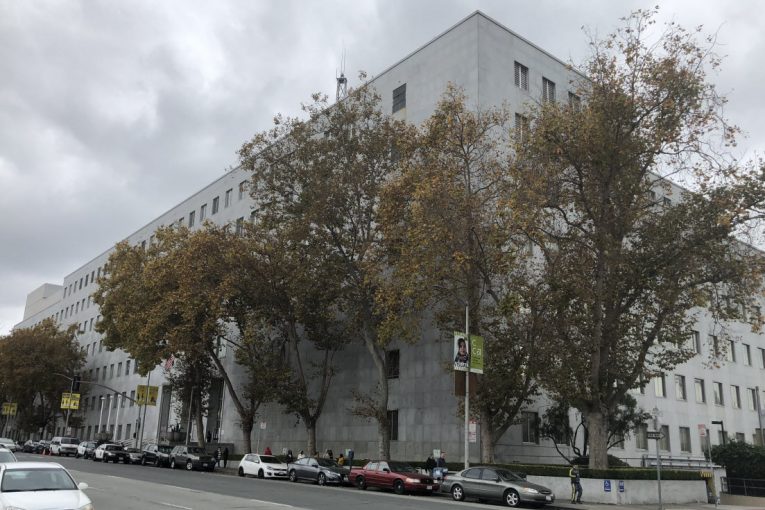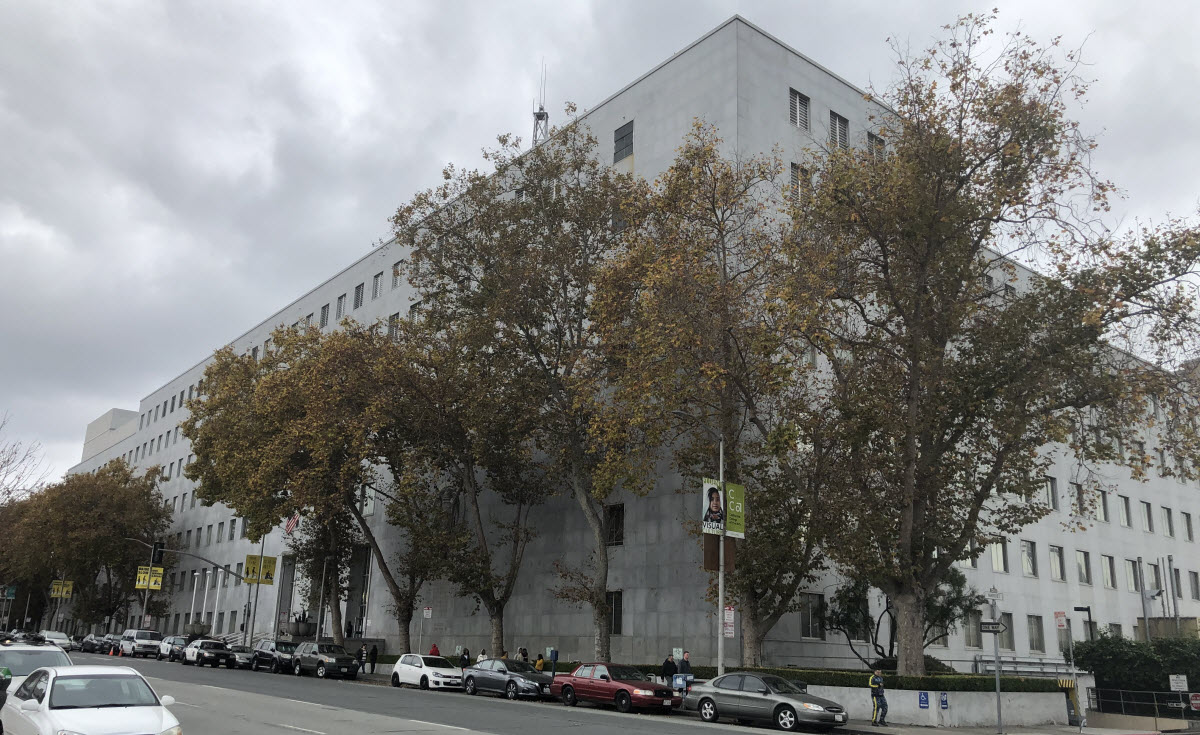

By Ryan Oh
At a preliminary hearing held in Department 9 on November 27, 2019, Judge Rita F. Lin denied the defense’s motion to suppress and request to reduce the case from a felony to a misdemeanor, ordering the defendant to answer for his charges.
On October 6, 2019, at approximately 7:30 a.m., Daniel Hadley was detained and arrested by two police officers – Officer Smith-Russack and Officer Mattisen – of the San Francisco Police Department at the intersection of 16th Street and Mission Street in San Francisco. Mr. Hadley was reportedly smoking an illegal narcotics substance using his glass, cylindrical pipe. The officers noted this during their patrol and attempted to arrest the defendant, who actively resisted with “full force” and smashed his pipe onto the ground during the process – the breakage prevented law enforcement from identifying the substance. The physical altercation caused injury of the two officers, thereby allowing the case to be prosecuted as a felony.
The People called the two officers as witnesses, to proceed with the preliminary hearing against the defendant. Officer Smith-Russack appeared as the first witness and testified that he noticed the presence of an unidentified black substance on Mr. Hadley’s pipe during his patrol. Although he was not entirely sure of the substance, the officer assumed the substance as an illegal narcotic due to his experience with narcotics cases and relevant training in the police academy. The officer testified that soon after he and Officer Mattisen approached the defendant, Mr. Hadley began to yell and provoke the officers. The situation then escalated to a physical fight, which caused Officer Smith-Russack to grab Mr. Hadley’s right arm while his partner pressured the defendant’s left  arm. Officer Mattisen then performed a so-called “two on one takedown” technique – using his body weight to pressure the defendant to the ground – which forced both Officer Smith-Russack and the defendant to fall. During this process, Officer Smith-Russack revealed that his head was forced to smash against the ground, causing a concussion. His testimony further revealed that the symptoms of his concussion have been ongoing.
arm. Officer Mattisen then performed a so-called “two on one takedown” technique – using his body weight to pressure the defendant to the ground – which forced both Officer Smith-Russack and the defendant to fall. During this process, Officer Smith-Russack revealed that his head was forced to smash against the ground, causing a concussion. His testimony further revealed that the symptoms of his concussion have been ongoing.
In her cross-examination, the defense asked whether the officers had a clear view of the defendant before their approach, to which Officer Smith-Russack responded with a positive. Officer Smith-Russack also testified that Mr. Hadley had no interaction with other people in the street and seemed to mind “his own business,” not causing harm to anyone before the incident. The defense then moved on to prove the insufficiency cause for arrest by asking whether the officers were confident in identifying the black substance on Mr. Hadley’s glass pipe. The officer admitted that, though he had seen the black substance “on a daily basis,” the content of substance that he had dealt with in other cases did not necessarily match with his suspicion. Moreover, the defense asked how the officers knew that Mr. Hadley was resisting in “full force.” Officer Smith-Russack responded that he was able to tell since Mr. Hadley was putting forth enormous strength to move away from the grab of two full-grown men.
The People then called Officer Mattisen as the second witness. Officer Mattisen’s testimony matched most of his partner’s prior statement, with the addition of some details. Officer Mattisen testified that the defendant was provoking the officers by saying that “if you (the officers) have a problem, just punch me in the face.” Additionally, the defendant was reported to position himself in a “fighting stance,” characterized by clenched fist and stretched arm. Even after minutes of physical altercation and application of handcuffs, the defendant was reportedly resisting against the officers by forcefully shaking his body and shivering his legs. More importantly, the defendant allegedly threatened to kill the officers and cause injury of not only Officer Smith-Russack but also Officer Mattisen during the incident. Officer Mattisen stated that his right elbow suffered from bruising and swelling as he tried to pressure the defendant’s torso onto the ground and collided with the cement of the ground. The officers indicated the seriousness of the case as the defendant threatened and inflicted bodily hurt on them.
In the closing statement, the defense mentioned that there was not enough legal basis for the officers to arrest the defendant, as the officers were not sure about the substance that Mr. Hadley was smoking and the defendant was not causing any harm to other people prior to the officers’ approach. Hence, the defense requested a motion to suppress and reduce the case to a misdemeanor under Penal Code section 17(b). However, the judge showed no mercy and denied the defense’s request. She noted that there was sufficient evidence presented by the People in proving the defendant’s crime, while the fact that Mr. Hadley’s active resistance caused the officers’ injury and forces the court to deem the case under a felony grade. Following the judge’s statement, Mr. Hadley was ordered to answer for his charges.




